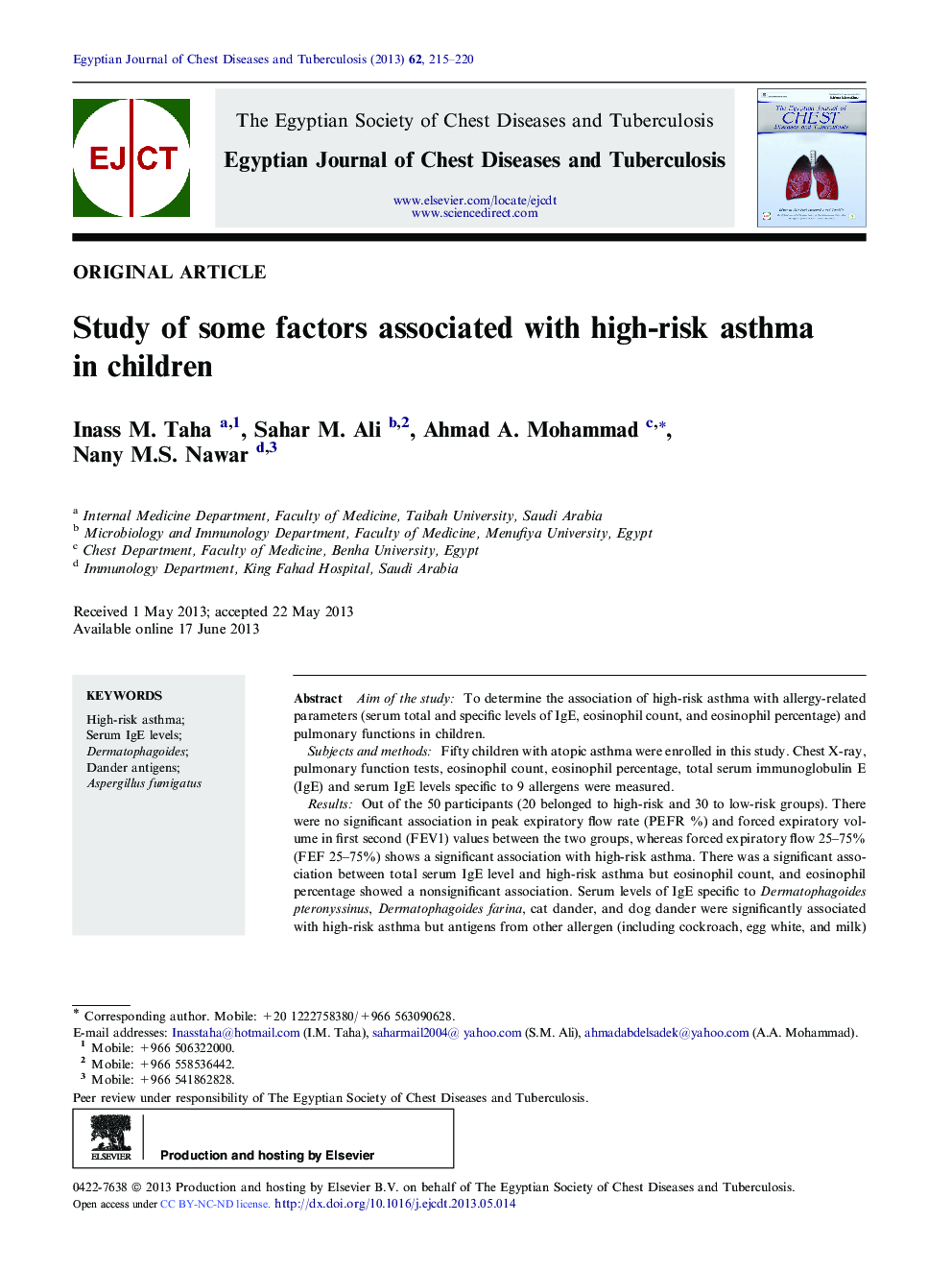| Article ID | Journal | Published Year | Pages | File Type |
|---|---|---|---|---|
| 3400049 | Egyptian Journal of Chest Diseases and Tuberculosis | 2013 | 6 Pages |
Aim of the studyTo determine the association of high-risk asthma with allergy-related parameters (serum total and specific levels of IgE, eosinophil count, and eosinophil percentage) and pulmonary functions in children.Subjects and methodsFifty children with atopic asthma were enrolled in this study. Chest X-ray, pulmonary function tests, eosinophil count, eosinophil percentage, total serum immunoglobulin E (IgE) and serum IgE levels specific to 9 allergens were measured.ResultsOut of the 50 participants (20 belonged to high-risk and 30 to low-risk groups). There were no significant association in peak expiratory flow rate (PEFR %) and forced expiratory volume in first second (FEV1) values between the two groups, whereas forced expiratory flow 25–75% (FEF 25–75%) shows a significant association with high-risk asthma. There was a significant association between total serum IgE level and high-risk asthma but eosinophil count, and eosinophil percentage showed a nonsignificant association. Serum levels of IgE specific to Dermatophagoides pteronyssinus, Dermatophagoides farina, cat dander, and dog dander were significantly associated with high-risk asthma but antigens from other allergen (including cockroach, egg white, and milk) showed a nonsignificant association. Serum levels of IgE specific to Aspergillus fumigatus and fish were negative in both groups.ConclusionChildren with higher serum levels of IgE specific to D. pteronyssinus, D. farina, cat dander and dog dander antigens, total serum IgE levels, and lower FEF 25–75% values belong to the high-risk asthma group.
